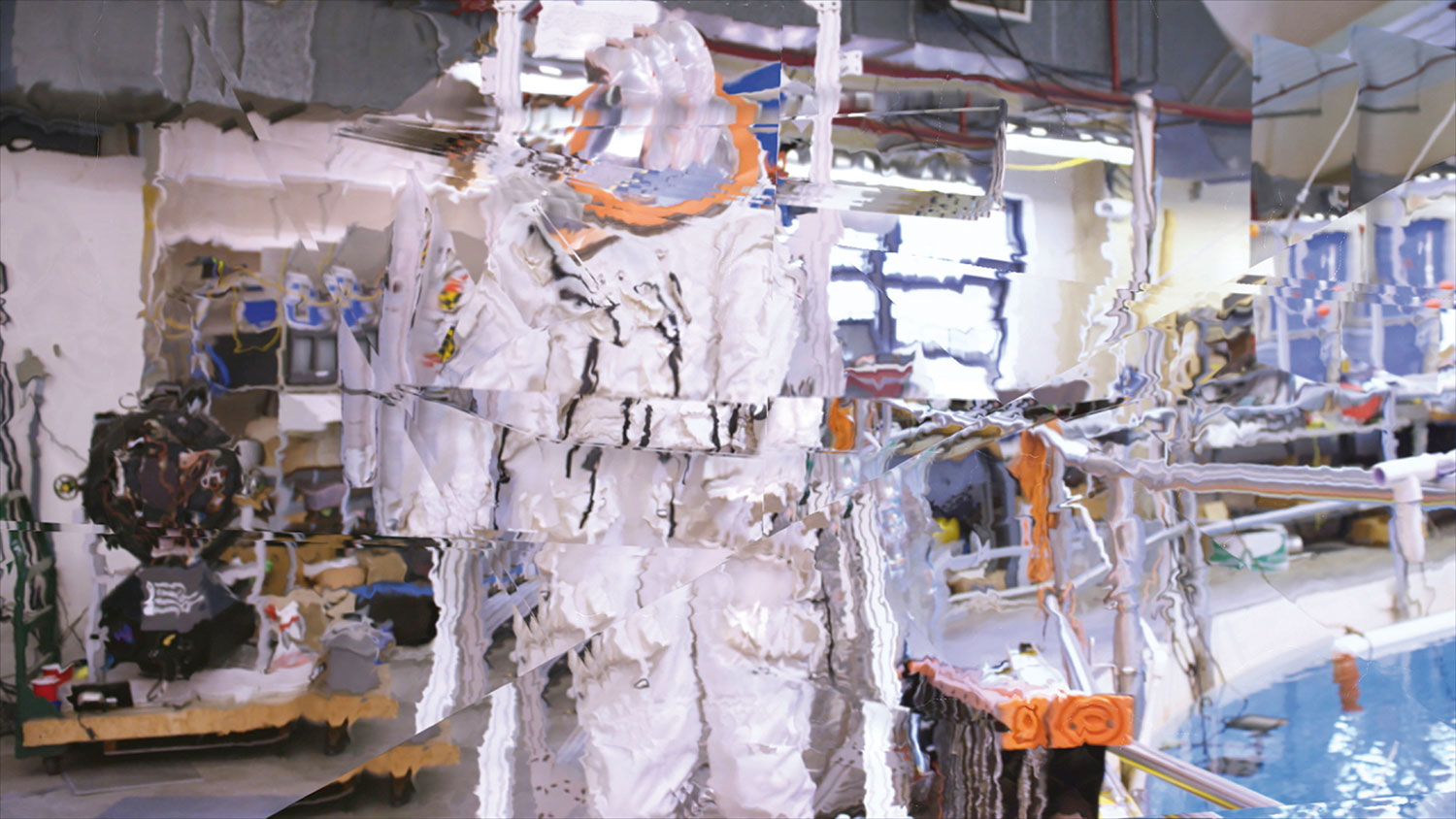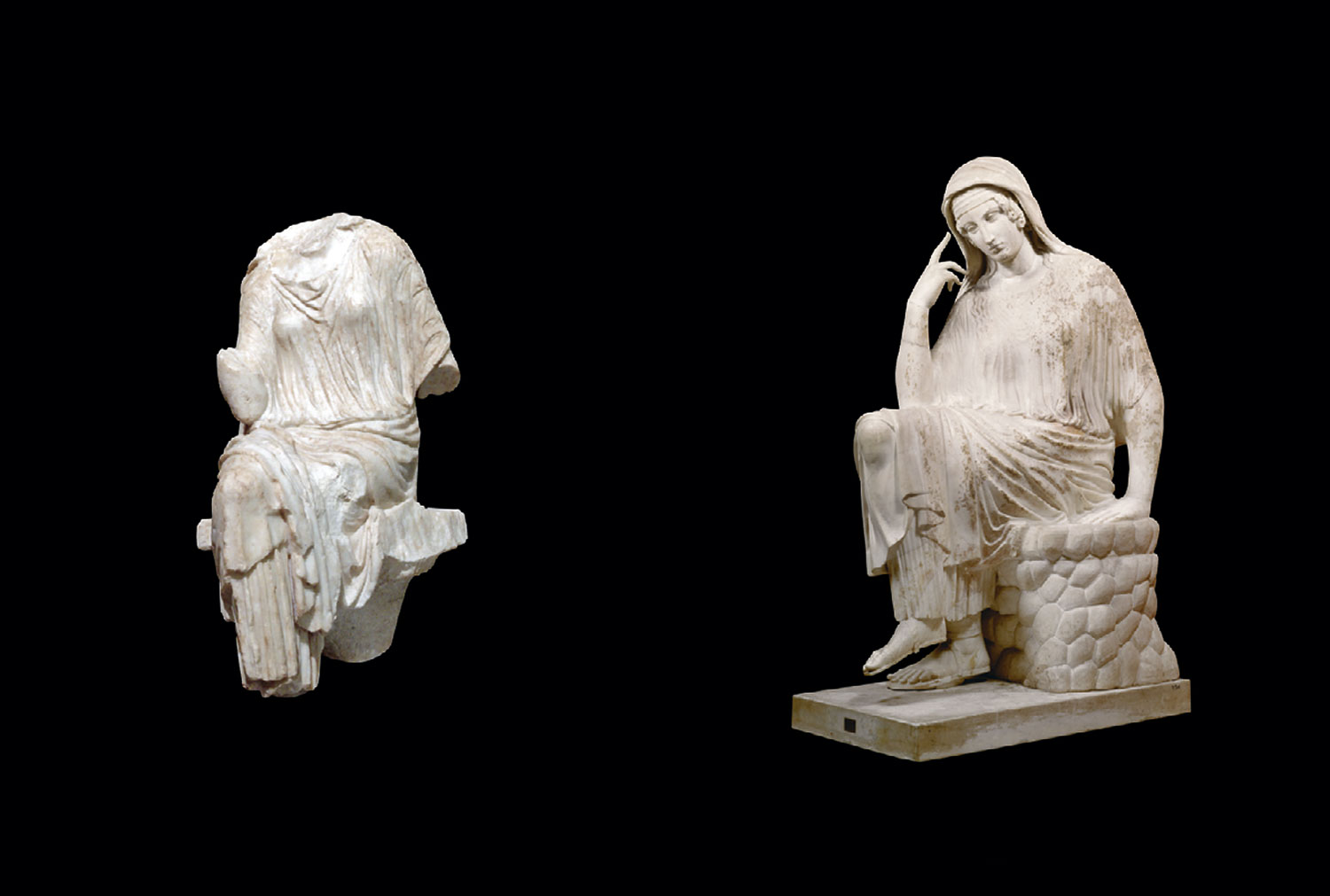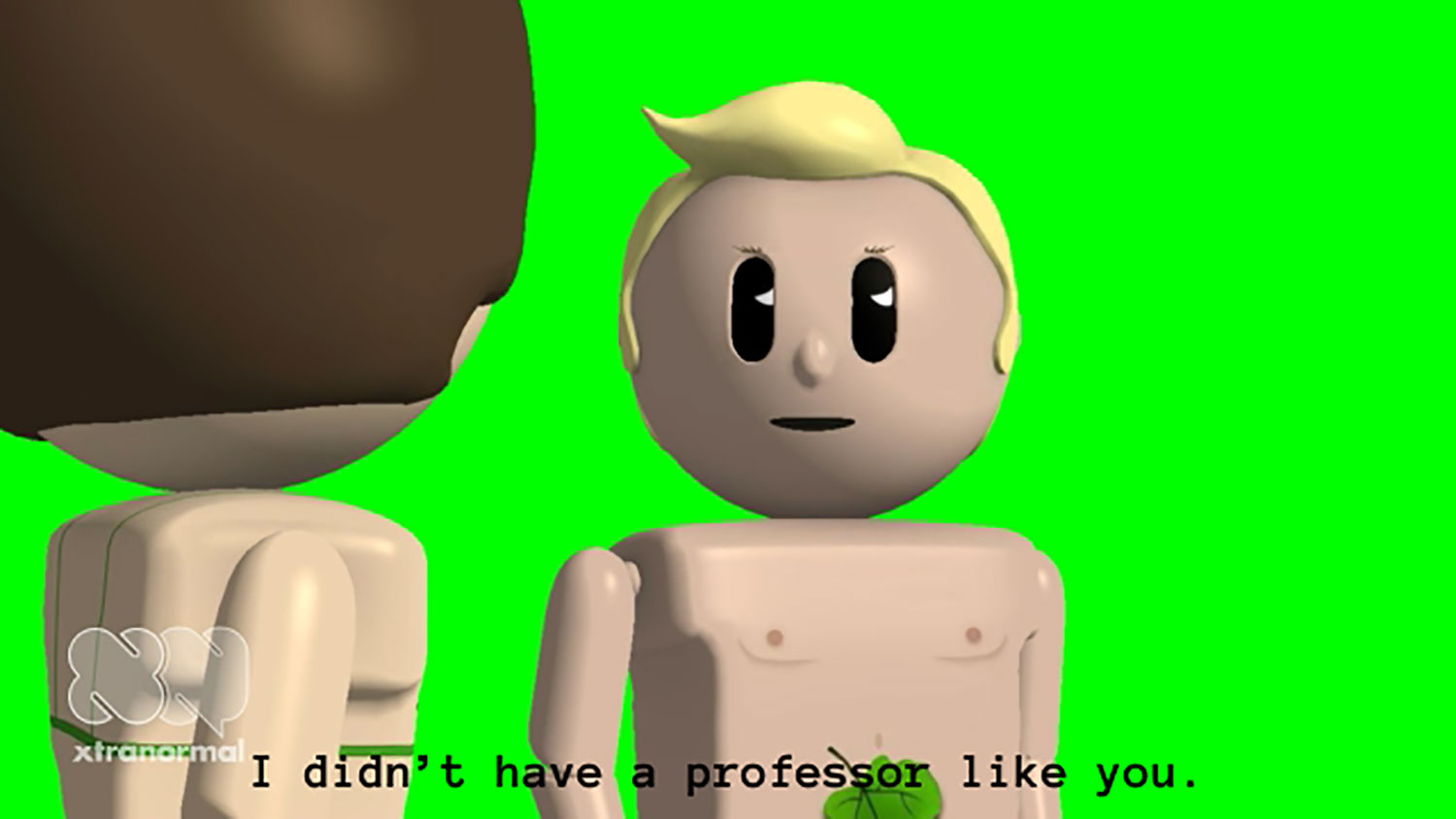One day, guided by a false sense of originality, someone will write the history of the avant-garde as a long succession of déjà vus. Valeria Luiselli will then be able to smile lightly and say, with a touch of irony, she did it first. At the age of thirty-one, the Mexican author already knows well that the history of the avant-garde is a history of repetitions and rewritings. Where others often see a blind alley, the exhaustion of the search for literary novelty and experimentation that historically defined the avant-garde, she has imagined a possibility: a poetics of spectral repetition, moving literature forward by conjuring its ghosts, shedding the weight of the legacies of modernism by playing with its traces. Author of three books that cross the generic border between fiction and essay, Luiselli has configured her work as a Duchampian boîte-en-valise within which the spectral echoes of literary and artistic avant-gardes enter into a distinctly contemporary dialogue. Like Marcel Duchamp, who between 1935 and 1940 created over twenty boxes that held miniature reproductions of his own artworks, Luiselli knows the value of scale and lightness. From her first published book, Sidewalks, a work that draws an intimate cartography of literary space, to her critically-praised debut novel, Faces in the Crowd, for which she received a 2014 National Book Foundation 5 Under 35 award, to the recent novel-essay The Story of My Teeth, commissioned by Colección Jumex in Mexico City, Luiselli’s books act as small portable suitcases within which literary history is restructured and present-day Latin American literature is reimagined in relationship to the ever-fleeting origins of the historical avant-garde.
Indeed, Luiselli is no stranger to the art of suitcases. As the daughter of a Mexican ambassador, mobility has been a constant through her life: born in Mexico, she’s since lived in Costa Rica, South Korea, South Africa, India, Spain, France and the United States. Her writing, brisk and graceful, always on the move, exemplifies what Italo Calvino, in Six Memos for the Next Millennium, called thoughtful lightness — the shedding of weight from literary structure, which he proposes as “an auspicious image for the new millennium.” As she writes in Sidewalks, which first appeared in Spanish in 2010, “Nothing was further from the truth, in my life at least, than the metaphor of literature as a habitable place or a permanent dwelling. At best, the books I read were much like certain hotel rooms in to which we enter, exhausted, at midnight and from which we are expelled at midday.” Upon the evanescent grounds of such a hotel-world, Luiselli has decided to set up tent. As an avid reader of Enrique Vila-Matas — whose masterpiece A Brief History of Portable Literature sketches a mobile literary history of the avant-garde — her books depart from the unsettling realization that not even at home are we really by ourselves. Today, when the emergence of new social technologies produces a world full of windows, both virtual and concrete, when the relationship between private and public has become more ungraspable than ever, the task of the writer becomes — for Luiselli — that of “constructing small, fleeting intimacies in other spaces.” This quest for an impossible intimacy runs throughout her work, structuring not only our sense of reality but also forcing upon us a fundamental question: What sort of intimacy is produced by the solitary act of reading? Instead of portraying the city as a book to be read, instead of viewing Mexico City as a urban palimpsest, Luiselli inverts this traditional spatial metaphor and ends up suggesting that “[t]he journeys we make during the reading of a book trace out, in some way, the private spaces we inhabit.” The idea that a reader’s journey could produce “bridges, passages, walkways, skyscrapers, avenues, narrow and silent streets” is at the very heart of a brave literary enterprise that conceives itself as a city permanently under construction.
Sidewalks reads as a playful literary counterpart to Gaston Bachelard’s classic The Poetics of Space. The fact that it was published by a then twenty-eight-year-old Mexican writer living in Harlem should make us wonder how we approach Latin American literature today. Don’t expect Luiselli to give the reader a totalizing image of Latin America, like those provided by the writers of the Latin American Boom. Cosmopolitan and yet profoundly Mexican, Luiselli aims for something else. As a reader of both W.G. Sebald and Roberto Bolaño, of Joseph Brodsky and Margo Glantz, of Margarite Duras and Sergio Pitol, her aim is simultaneously broader and humbler. A great miniaturist, always conscious of the problem of scale, Luiselli knows well that the map of a whole continent can be sketched within the ruinous walls of an empty building. Whether she is writing about her search for Joseph Brodsky’s grave or reflecting on Mexican cartography, whether she is sketching the city from a cyclist’s perspective or exploring the elusive meaning of the Portuguese word saudade (roughly nostalgia or melancholy), writing about the stuttering limits of language, empty apartments or the liminal place of the doorman, the essays that comprise Sidewalks present us with a writer deeply aware of tradition. A writer who has undertaken the project of rewriting the Latin American literary tradition purged of the ambitions — or pretensions — of representing the histories, moods and pathologies of an entire continent, characteristic of the work of Gabriel García Márquez, Mario Vargas Llosa or Alejo Carpentier. Always under construction, Luiselli’s literary city — like that of other young international authors, such as Teju Cole and Chloe Aridjis — is porous and open, a city of transients and immigrants. Her books demonstrate how within this ethereal and fragile metropolis, as likely New York as Mexico City, the specters of Latin America will always reclaim their space. The problem she poses is how to juggle, without discarding, the consuming weight of tradition.
Luiselli’s second book and debut novel, Faces in the Crowd (2011), implicitly a work about what it means to become a writer nowadays, elaborated — thematically, stylistically and atmospherically — upon the insights of Sidewalks, presenting a world haunted by the specters of the avant-garde. “All novels lack something or someone,” she writes. “In this novel there’s no one. No one except a ghost that I used to see sometimes in the subway.” If in Sidewalks Luiselli emphasizes a kind of negativity underlying both literary creation and spatiality, Faces in the Crowd stages within this landscape of absences a novel about the ways we experience, cope with and to some extent mourn literary history.
The novel is narrated by a nameless young mother who, from the perspective of contemporary Mexico, recalls her days as a literary scout in New York. Tasked with finding the next Latin American literary sensation, the next Bolaño, the narrator ends up instead staging a literary hoax: the discovery of an unpublished set of translations by the American modernist titan Joshua Zvorsky (a stand-in for Louis Zukofsky) of poems by the (real, if little known) Mexican avant-garde poet Gilberto Owen (who did live between New York and Philadelphia from 1928 until his death, in 1952). As the novel progresses, the ghostly presence of Owen begins to gain shape, slowly taking over the narrator’s world and revealing, beneath the quotidian reality of contemporary city life, a realm in which the ghosts of Federico García Lorca, Ezra Pound, Nella Larsen, José Limón and Duke Ellington coexist within the estranged intimacy of a simple family. As the narrator begins to amass — around a dead plant — post-its concerning Owen’s time in Harlem, the poet’s own intimate tragedy begins to unfold.
Faces in the Crowd, however, doesn’t work by accumulation. It seems, rather, to work — in a manner reminiscent of the bonsai-like novels of Alejandro Zambra — by subtraction. It begins with a well-delineated world, but ends up configuring a space where the private and the public coexist, where the weight of tradition begins to slowly dissipate in a journey toward disappearance. In what marks one of the novel’s most powerful moments, Gilberto Owen is seen weighing himself on the scales in the 116th Street subway station. His conclusion is devastating: he is slowly disintegrating, loosing pound after pound. Owen’s journey towards weightlessness serves as a synecdoche of the novel’s journey of disappearance. The great accomplishment of Faces in the Crowd lies precisely there, in its capacity to sketch literary history as a spectral city where the figure of the author disintegrates, only to reappear as a ghost leading literature forward. In Luiselli’s world everything becomes simultaneously estranged and intimate, spectral and yet terribly concrete. Within the claustrophobic corridors of literary history, she has built a subterranean crypt where Mexican literary history can play hide and seek.
Literary history would return, this time wrapped in humor, in Luiselli’s most recent book, The Story of My Teeth. This picaresque, or novel-essay as the author has called it, tells the story of Gustavo “Highway” Sánchez Sánchez, a collector, traveler and, most importantly, a legendary auctioneer. His favorite auctions: those of his teeth. His method: selling not so much the object itself, but rather the history of the object. Originally commissioned by Colección Jumex, The Story of My Teeth allegorizes the mechanisms through which art objects and literature gain their value. The book first appeared as part of catalogue for “The Hunter and the Factory,” an exhibition curated by Magalí Arriola and Juan Gaitán that attempted to reflect on the relationship between the work of art, the collection galleries and the collection’s broader context. Focusing on the socio-economic disparities between the audience for the Colección Jumex and the workers in the juice factories owned by Grupo Jumex, the source of the collection’s funding, Luiselli decided to write a text for and with the workers. In a project reminiscent of both the mid-nineteenth century “tobacco reader” and the serialized novel, Luiselli submitted the text in installments, which were then printed as chapbooks and handed out to the factory workers. Several workers formed a reading group, which began to provide input for the work-in-progress, helping give shape to the idiosyncratic novel. This political gesture is narrativized in the novel through Highway’s experiences in both spaces. Early on he finds work as a security guard at the Jumex factory, before ascending to a position as a world-renowned auctioneer. Subsequently, at his lowest moment, Highway finds himself, having lost everything including his precious teeth, locked inside the Museo Jumex, mocked by the terrifying clowns in Ugo Rondinone’s four-channel video installation Where Do We Go From Here? (1996). The scene condenses the ways in which parody serves the novel in establishing a critique of its own conditions of possibility.
If both Sidewalks and Faces in the Crowd offered melancholy considerations of literary history and the nature of space, The Story of My Teeth reads like an exuberant send-up of literary history and its role in the production of value. As in her previous novel, in which the forgery of Owen’s translated poems begins to shatter the narrator’s reality, we encounter here a world in which value is not a given, but rather the product of the stories we tell ourselves about those objects. If, in the process of signifying a world, The Story of My Teeth ends up conjuring the ghosts of the major names of literary history, from Joyce to Juan Villoro, it is not out of nostalgic attachment to a vanished past, but rather out of a carnivalesque celebration of the malleability of these histories, in which everyone — including the factory workers at Jumex — is free to take part. By breaking down the barrier between author and reader, The Story of My Teeth serves at once as a critique of the function of value in the operation of cultural production and cultural memory and as a proposition for the possibility of the democratization of literature.
At a particular moment in Luiselli’s first novel, the narrator thinks she has seen Gilberto Owen among the faces in the New York subway. The image, in its timelessness and fragility, perfectly captures the poetic force of the world she has created: literary history, for Luiselli, constitutes a space to be traversed rather than a simple timeline, a fleeting place where the dreams of art resound as incomplete promises. Reading her books, I am sometimes reminded of the dream-like boxes of Joseph Cornell, self-contained if always-unfinished worlds. Her novels, like Cornell’s boxes, hold within them the impossible promise of a brief and truthful intimacy: that of the reader.




